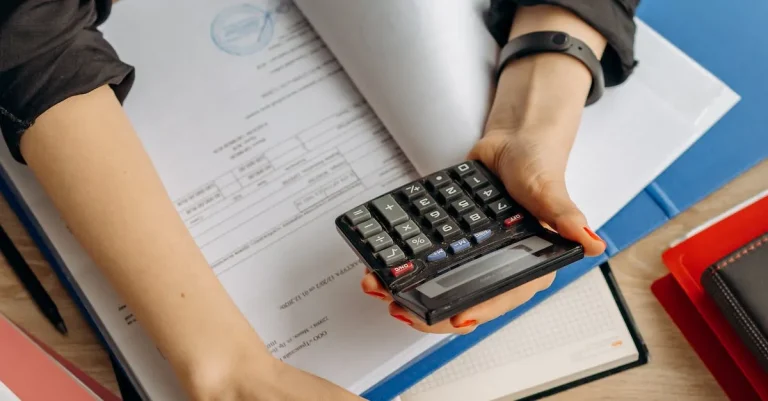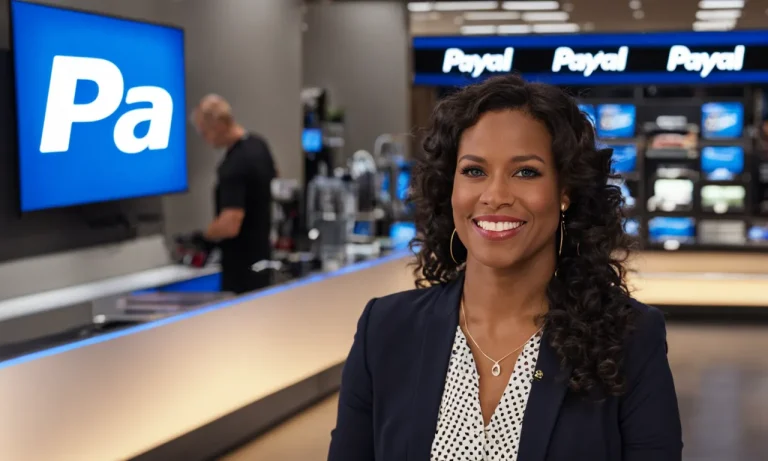Do Renters Pay School Taxes In Pennsylvania?
If you’re renting a home or apartment in Pennsylvania, you may be wondering if part of your rent goes towards paying school taxes in your district.
With education being a major budget item for the state, it’s a fair question to ask as a renter and taxpayer.
If you’re short on time, here’s a quick answer: Yes, renters do indirectly pay school taxes in Pennsylvania.
While property owners are responsible for paying the tax directly, landlords factor the cost into the rent they charge tenants. So renters contribute their share towards local education costs.
Background on School Funding in Pennsylvania
When it comes to funding public schools in Pennsylvania, there are several sources that contribute to the overall budget.
One of the main sources of funding is school property taxes, which are paid by homeowners in the state. However, there is often confusion surrounding whether renters also contribute to these taxes.
Primary Funding Sources
Before delving into the specific details of renters’ contributions, it is important to understand the primary funding sources for Pennsylvania schools.
The majority of school funding comes from a combination of state and local taxes. The state contributes its share through income and sales taxes, while local taxes, including property taxes, make up the rest.
School Property Taxes
Property taxes play a significant role in funding Pennsylvania schools. Homeowners are responsible for paying these taxes based on the assessed value of their properties.
The revenue generated from property taxes is then used to support various aspects of the education system, including teacher salaries, school supplies, and infrastructure improvements.
It is worth noting that school property taxes can vary from one school district to another. This means that homeowners in different districts may pay different amounts depending on the local tax rates and property values.
Renters’ Contributions
Now, let’s address the question at hand: do renters pay school taxes in Pennsylvania?
The answer is that while renters do not directly pay school property taxes, it is important to understand that these taxes are factored into the cost of renting a property.
Landlords who own the rental properties are responsible for paying the property taxes. To cover these expenses, landlords often include the estimated property tax costs as part of the rental price.
Therefore, even though renters may not see a separate line item for school property taxes on their rental bills, they are indirectly contributing to these taxes through their monthly rent payments.
This indirect contribution from renters helps ensure that the burden of school funding is shared among all residents, regardless of whether they own or rent their homes.
To learn more about the funding sources for Pennsylvania schools and how they impact renters and homeowners, you can visit the official Pennsylvania Department of Education website.
How School Tax Bills Are Calculated for Property Owners
When it comes to school tax bills in Pennsylvania, property owners are responsible for paying these taxes. Renters, on the other hand, do not directly contribute to school taxes as they do not own the property.
The calculation of school tax bills for property owners is based on a few key factors.
Assessed Property Value
The assessed property value plays a crucial role in determining the amount of school taxes that property owners have to pay.
The assessed value is an estimate of the fair market value of the property, which is determined by the local tax assessor’s office. This value is used as a baseline for calculating the property owner’s share of the school tax bill.
Millage Rates
Millage rates are another important factor in calculating school tax bills. A mill is equal to one-tenth of a cent, and the millage rate is the rate of taxation per one thousand dollars of assessed property value.
The millage rate is set by the local school district and is used to calculate the property owner’s tax liability. Higher mileage rates result in higher property tax bills.
Tax Relief Programs
Pennsylvania offers various tax relief programs to help alleviate the burden of school tax bills for eligible property owners.
These programs include homestead exemptions, which provide a reduction in property taxes for primary residences, and tax freeze programs, which limit the increase in property taxes for senior citizens.
These programs aim to provide financial assistance to property owners who may be struggling to pay their school tax bills.
It’s important for property owners to understand how school tax bills are calculated to effectively plan their finances. By knowing the assessed property value, millage rates, and available tax relief programs, property owners can better manage their school tax obligations.
To learn more about school taxes and tax relief programs in Pennsylvania, you can visit the official website of the Pennsylvania Department of Revenue.
How Rent Covers the Cost of School Taxes
Many renters in Pennsylvania often wonder if they are responsible for paying school taxes, especially since they do not own the property they are living in.
It is important to understand how the cost of school taxes is covered when it comes to renting a property.
Property Expenses Passed on to Renters
When a property owner pays their school taxes, they typically factor in these expenses when determining the rental price for their property. This means that renters indirectly contribute to the payment of school taxes through their monthly rent payments.
While they may not directly pay the taxes themselves, the cost is factored into the overall expenses of the property and passed on to the renters.
It is important for renters to keep in mind that the amount they pay in rent not only covers the cost of the property itself but also includes various expenses such as property taxes, insurance, and maintenance.
School taxes are just one component of these overall property expenses.
Approximate Share of Rent Towards School Taxes
The exact portion of rent that goes towards school taxes can vary depending on several factors, including the property’s value, location, and the specific school district.
While it is difficult to provide an exact percentage, it is estimated that a significant portion of the rent goes toward covering school taxes.
According to a recent study, renters in Pennsylvania contribute an average of 2.5% of their monthly rent toward school taxes. However, this number can vary greatly depending on the specific circumstances of each rental property.
Variation Across School Districts
It is important to note that the share of rent that goes towards school taxes can differ significantly across different school districts in Pennsylvania.
Some school districts may have higher property values and higher tax rates, resulting in a larger portion of the rent being allocated toward school taxes.
On the other hand, some school districts may have lower property values and lower tax rates, resulting in a smaller portion of the rent being allocated toward school taxes.
It is worth noting that these variations can have an impact on the affordability of rental properties in different areas.
Limits on Renters’ School Tax Contributions
When it comes to school taxes in Pennsylvania, renters often wonder if they are responsible for paying them. The answer to this question is not a simple yes or no.
While renters do not directly pay school taxes as property owners do, they indirectly contribute to these taxes through their monthly rent payments.
However, there are certain limits and factors that affect the amount of school tax renters contribute.
Property Tax Relief
One important aspect to consider is the availability of property tax relief programs in Pennsylvania.
These programs aim to provide financial assistance to homeowners and renters who may struggle with the burden of property taxes.
Renters can benefit from these relief programs as they indirectly help to reduce the overall tax burden on the property owner, which can, in turn, affect the amount of rent charged.
This means that renters may indirectly benefit from property tax relief measures implemented by the state.
It’s important to note that the specific property tax relief programs and their impact on renters may vary depending on the county or municipality.
Renters should check with their local government or tax authority to learn more about the available programs and how they may be eligible for any potential relief.
Rent Control
Another factor that can limit renters’ school tax contributions is the presence of rent control policies.
Rent control is a regulation that limits the amount landlords can increase rent on their properties. These policies are designed to protect tenants from excessive rent hikes and provide stability in the rental market.
While rent control primarily focuses on regulating rental prices, it indirectly affects renters’ school tax contributions as well.
When rent increases are limited, landlords may have less flexibility to pass on any potential property tax increases to their tenants. This can help keep the overall cost of renting more affordable, including the portion that indirectly covers school taxes.
It’s worth noting that rent control policies can vary significantly from one city or municipality to another. Some areas may have strict rent control regulations, while others may have no rent control measures in place.
Renters should familiarize themselves with the specific rent control policies in their area to understand how they may impact their school tax contributions.
School Tax Implications for Renters vs. Homeowners
Benefits for Homeowners
Homeowners in Pennsylvania have a direct responsibility to pay school taxes. These taxes are typically included in their annual property tax bill and are used to fund local public schools.
Homeowners have the advantage of being able to deduct a portion of their property taxes on their federal income tax returns, which can help offset the overall cost.
Additionally, homeowners may benefit from the appreciation of their property value over time, which can provide a return on their investment.
According to the Pennsylvania Department of Education, school property taxes are the primary funding source for public schools in the state. Homeowners’ contributions play a crucial role in providing resources and funding educational programs for students.
Considerations for Renters
Unlike homeowners, renters in Pennsylvania do not directly pay school taxes.
The responsibility for paying these taxes falls on the property owner or landlord. However, it’s important to note that landlords may include the cost of school taxes in the rental price.
This means that indirectly, renters may contribute towards school taxes through their monthly rent payments.
Renters also do not have the opportunity to deduct school taxes on their federal income tax returns. However, renting does offer some flexibility and freedom compared to homeownership.
Renters can choose to live in different areas or move more easily, which can be advantageous for those who prefer a more transient lifestyle or have career-related mobility.
It’s worth mentioning that the impact of school taxes on rental prices may vary depending on factors such as location, property value, and local market conditions. Renters should consider these factors when evaluating the overall cost of renting a property.
For more information on school taxes in Pennsylvania, you can visit the Pennsylvania Department of Education website.
Conclusion
In Pennsylvania, education is largely funded through local property taxes.
While renters don’t directly pay these school taxes, landlords incorporate the costs into the rent they charge tenants.
The amount renters contribute towards school funding can vary based on factors like assessed property values and millage rates in their district.
Renters indirectly shoulder a share of school taxes in Pennsylvania. But they don’t receive the same tax relief benefits or control over payments as direct property owners. Weighing the trade-offs can help renters make informed housing decisions.











